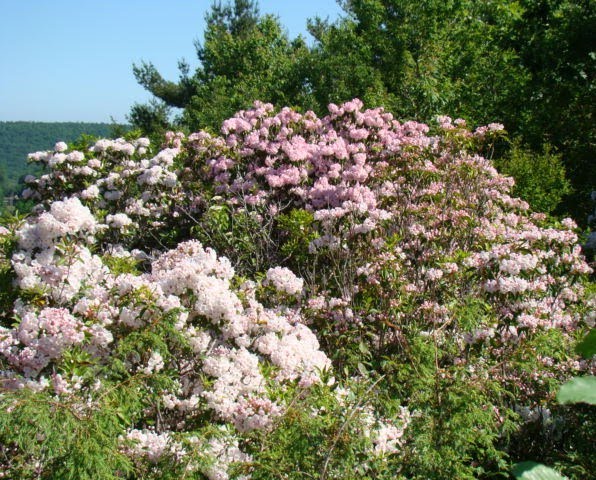
General Information
Creeping Juniper is an evergreen, prostrate shrub with a shallow root system. It is known for colonizing sand dunes as well as providing stabilizing properties for reducing erosion in a wide variety of sandy areas in grassland regions, along the edge of advancing forest vegetation and on rock lake shores. Creeping Juniper has been found on dunes as old as 345 years in lower Michigan.
Numerous wildlife, from big game including mule deer and bighorn sheep to marmot species such as prairie dogs, rely on Creeping Juniper as an important food source. Bird species such as rose-breasted grosbeaks, brown thrashers, black-billed cuckoos and hermit thrushes among others, are found in underbrush areas dominated by Creeping Juniper.
In cultivation, Creeping Juniper is one of the more popular ground covers in the U.S. Its adaptability and resilience in hot, dry, sandy and rocky soils make it a valuable landscaping plant -- an excellent selection for the tough conditions of urban landscapes. There are numerous varieties that exhibit diverse characteristics of texture, color, height, and shape which account for its popularity.
The native range of Creeping Juniper extends across all Canadian provinces. It continues south through New England and across the northern tier of the U.S. west to Wyoming and Montana.
Plant Habit and Form
This coniferous evergreen is prostrate and low-spreading in habit, with trailing branches that reach up to 10-20 feet or more and short, erect stems generally less than 10 inches tall. A mat-forming shrub, it is considered to be slow- to medium-growing with plant size found to be related to site conditions and climate. There are two types of leaves, awl-shaped and scale-like, with color varying from light green to bluish tones. Foliage turns purple in colder months. Glands are present on the undersides of the leaves. The bark is thin, scaly and shedding.
Growing Requirements
Creeping Juniper is hardy in zones 4 to 9. It grows best in fertile, well-drained soils but is more commonly known for growing in sandy, poorly developed soils. Highly adaptable, it tolerates heavy soils, steep north-facing slopes, swamps and exposed situations. Full sun is required.
Flowering and Fruiting
Creeping Juniper is dioecious. Flowers are inconspicuous and the fruit is 2-3 seeded, small, blue berry-like cones found on recurved stalks. Seeds are most likely dispersed by wind and wildlife.
Pests and Diseases
Spider mites and Juniper blight can cause serious problems.
ID Tips
Leaves are pointed, blue-green in summer, and purple in winter. Berries are .25 to .33 inches in diameter. Prostrate growing habit with floppy branches.

